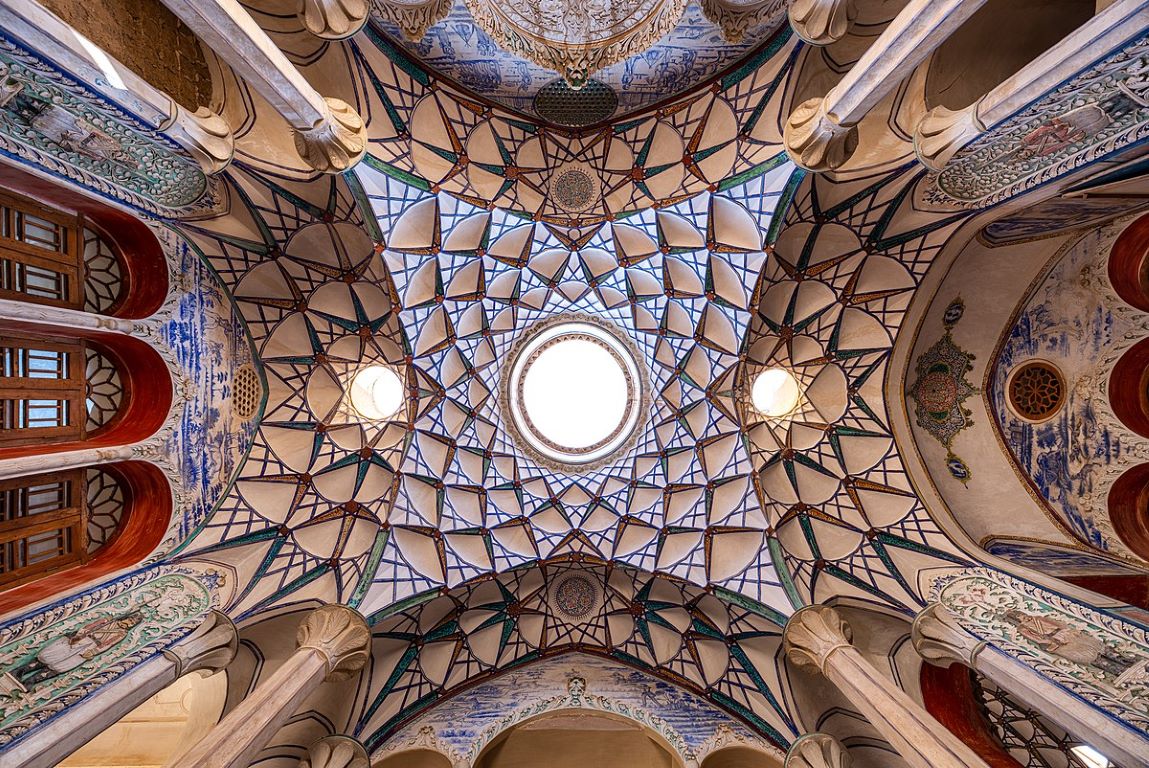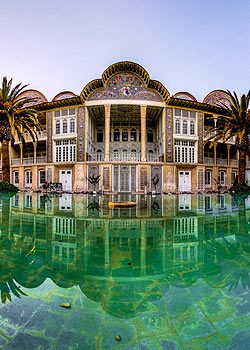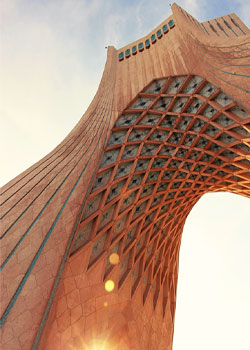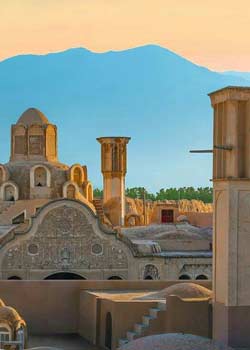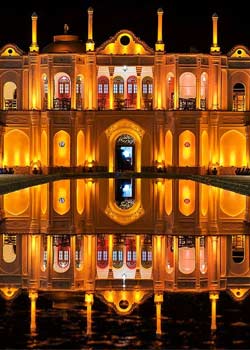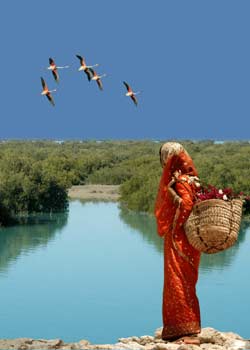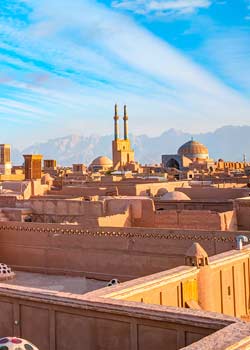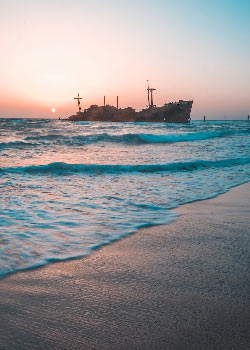Kashan is a city in the Isfahan province of Iran. Kashan is the first of the large oases along the Qom-Kerman road which runs along the edge of the central deserts of Iran. Its charm is thus mainly due to the contrast between the parched immensities of the deserts and the greenery of the well-tended oasis.
Archeological discoveries in the Sialk Hillocks which lie 2.5 miles (4 km) west of Kashan reveal that this region was one of the primary centers of civilization in pre-historic ages. Hence Kashan dates back to the Elamite period of Iran.
The Sialk ziggurat still stands today in the suburbs of Kashan after 7000 years. After world known Iranian historical cities such as Isfahan and Shiraz, Kashan is a common destination for foreign tourists due to numerous historical places.
GET AROUND KASHAN
Kashan is a small enough town to walk to most of the main sites, and you can get pleasantly lost walking through beautiful laneways (and if you’re lucky, onto Kashan’s famous rooftops).
KASHAN TAXI
Traveling by taxi in Kashan is easy and inexpensive. A shared taxi (savari) costs around 5,000—10,000 rials and private hire (darbast) costs up to 80,000 rials, depending on where you are going.
RIDE-SHARING APPS
It is recommended for traveler to use the ride-sharing apps such as SNAPP or TAP30 since they are cheaper than the regular taxi most of the time.
WHAT TO SEE IN KASHAN
In general finding the sites in Kashan is rather easy due to many dual language signs across the city.
Sialk Hill
Sialk Hill is the remains of an ancient city, with the world’s oldest ziggurat, dating to the 3rd millennium BC. The oldest settlement in Sialk dates back to more than 7000 years ago. The site is still under excavation. The remains of people who used to live there can be seen.
Agha Bozorg Mosque
Agha Bozorg Mosque is a historical mosque in Kāshān, Iran. The mosque was built in the late 18th century by master-mimar Ustad Haj Sa’ban-ali, the mosque and theological school (madrasah) is located in the center of Kāshān. It was here where Ustad Ali Maryam as a pupil started his career as a brilliant architect.
Boroujerdi ha Residence
The house of Boroujerdi, belonging to a trading family who migrated to Kashan, was built over a hundred years ago. The construction date can still be seen on the covered inscription of the building, completion of which took 18 years of work by tens of laborers, architects and master painters. Since exceptional attention has been paid to all minute architectural details demanded by the geographical and climatic conditions of the area, the house has attracted considerable attention of architects and recognition from Iranian and foreign scientific and technical teams.
Tabatabaie Residence
Tabatabaie Residence is a large house with several courtyards, which once belonged to a wealthy merchant. Experience how well the wind towers work.
It consists of delightful wall paintings with elegant stained glass windows and includes other classic signatures of Traditional Persian residential architecture such as biruni and andaruni.
Ameri-Ha (Amerian) House
Ameri-Ha (Amerian) House is a traditional house in Kashan built in the mid 19th century during the Qajar era, the house is one of several large spectacular old houses in the central district of Kashan.
Like the other houses around it, it was re-built after Kashan was ravaged by a series of massive earthquakes in the 18th century. The house is now a public museum.
Abbasian House
Abbasian House is a large traditional historical house built during the late 18th century, the house is a beautiful example of Kashani residential architecture. It is said to have been the property of a famous cleric. It has six courtyards that would fit the needs of different families. One of the chambers has a ceiling designed with mirror pieces so as to give the impression of a starry sky under the nocturnal glitter of candlelight. The house is now a public museum.
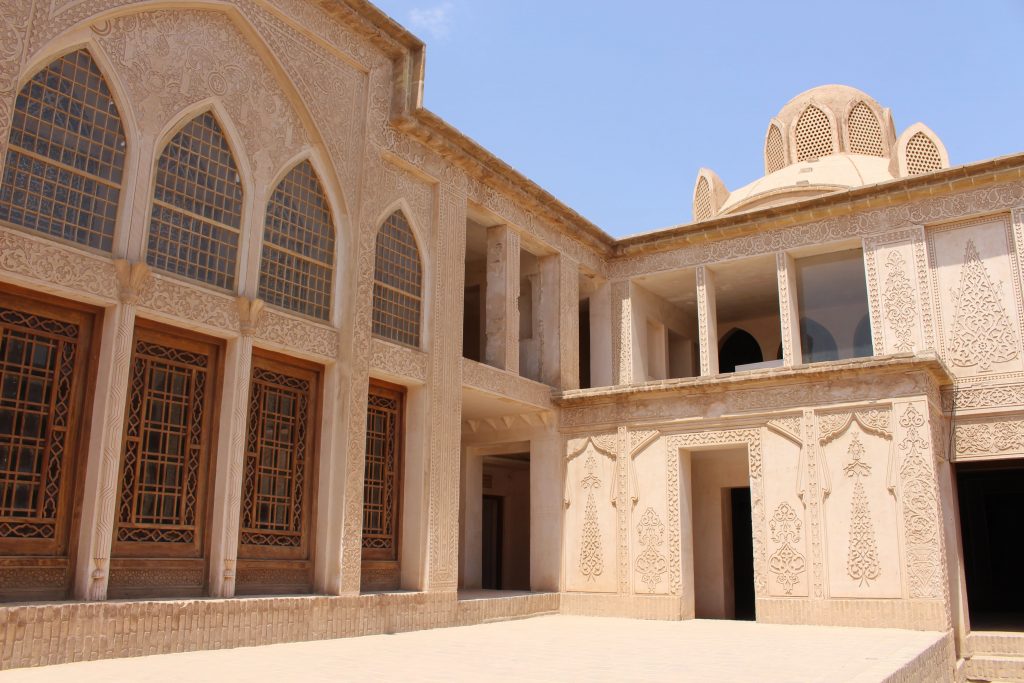
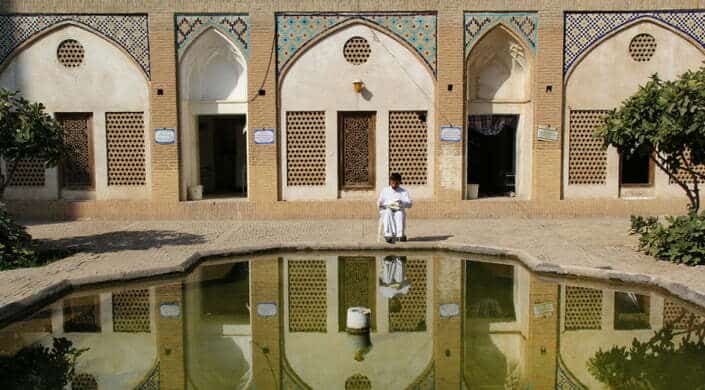
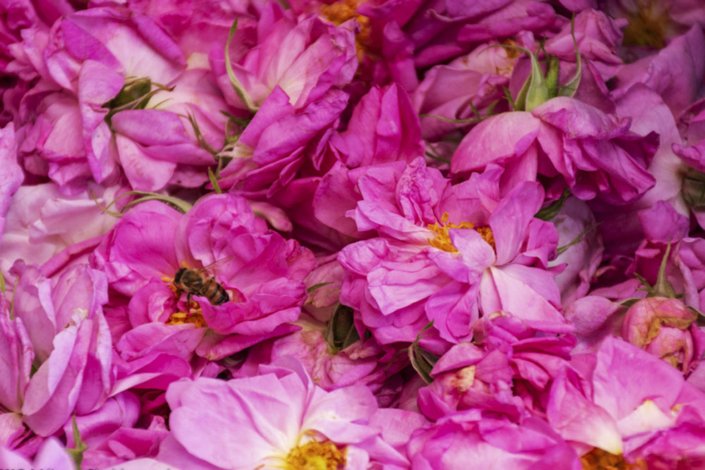
More photos

